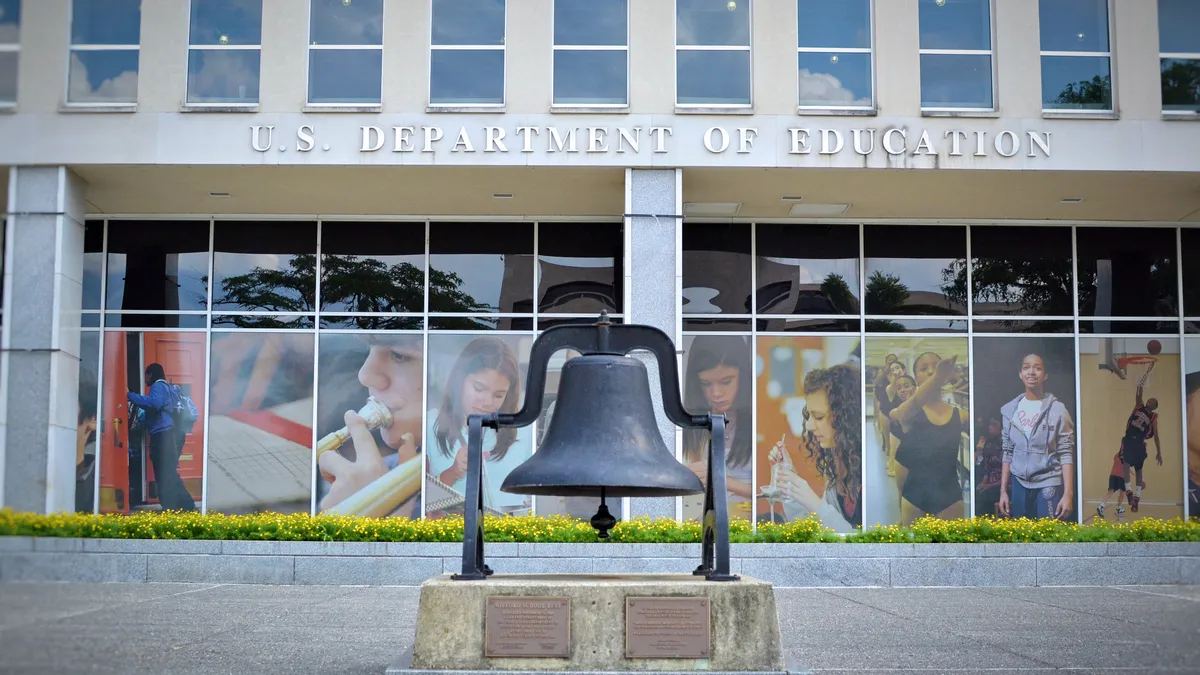As we march toward the next normal, higher ed leaders are hard-pressed to deliver more value, reimagine operations and serve students in entirely different ways. Meanwhile, money's tight for many, and could get tighter, as enrollment drops and competition grows for a dwindling pool of students.
Reasonably, the shortest and safest path to financial health is cutting wasteful spending: particularly recurring spending. The good news is that higher ed institutions have pockets of waste hiding in plain sight that can hold the key to efficiencies and savings opportunities.
To that end, leaders at small and large higher ed institutions have managed to turn resource-draining functions into financial and competitive advantages by turning their focus to print and parcel management.
When in-house print centers hinder more than help
Before you can uncover savings, you have to learn where waste is hiding. At many colleges and universities, one hiding place is the in-house print shop(s). Equipment leases, maintenance, real estate, labor and supply costs can all add up to a hefty price tag, month after month.
"Many universities aren't aware of their total cost of ownership. Plus, their cost structure isn’t scalable," shares Michael LaForge, Regional Account Manager with FedEx Office. "In-house print and parcel need to plan for peak capacity that often doesn't match the actual workflow," he explains. "This absorbs real estate, payroll, supply and equipment budgets, which can take resources away from student services."
Cost aside, it's worth noting that in-house print shops grow dated, fast. Once an institution buys or leases equipment and trains staff to operate those machines, the tendency is to stay tethered to aging equipment even as print technologies advance and the needs of the campus community evolve. Before long, they're running an antique shop compared to print capabilities that students and staff can access off campus.
For one southwestern university, the pains of running an in-house print shop outweighed benefits. With funding models declining, university leaders looked for new ways to leverage relationships, drive revenue and offset costs.
With that in mind, leaders saw an opportunity to boost the return on print and parcel management investments by working with FedEx Office to open a store within the student union. Through that relationship, FedEx Office shoulders the burden of all aspects of running print and pack-and-ship operations on campus. This allowed the university to shift a whole department away from making prints and copies, and refocus on higher-impact activities.
Several considerations draw leaders to that decision. We'll examine a few below.
Greater access, greater speed
In his role, LaForge advises higher ed leaders on how to magnify print and parcel management capabilities without using too much of their budgets. Though some universities opt for opening a FedEx Office store on campus, other schools benefit from the nationwide retail, transportation and manufacturing network with varying arrangements like near-campus and virtual services.
A FedEx Office location is a little node in a giant spider web, says LaForge. Whether it's on campus, near campus, virtual or across the country, that anytime/anywhere access translates into speed. "If one location is at capacity, we just move work to another shop," he explains.
The network also comes in handy when staff is away on business. "When faculty members travel for a conference, they can order materials on the go and have them delivered at their destination," adds LaForge.
24/7 vs. 9 to 5
At times, university leaders are hesitant to outsource print shop functions out of a desire to protect internal staff, or fear of hampering student and staff experiences. That perspective tends to change once they realize shop operations would no longer be limited to a few hours a day.
Students then have the ability to upload a document, order online and receive a notification when it's ready for pickup, instead of standing at the library printer waiting for copies to be ready. Similarly, 'round-the-clock service’ means staff and students don’t have to skip lunch or rush between classes to get things done before the shop closes.
Repurposing square footage
For universities that are short on real estate, offloading print services to a supplier like FedEx Office can free up considerable square footage.
"You don't have to dedicate a whole floor in a building to print and copies because you have a FedEx Office a block away or right on campus. You get that space back for classrooms, dorms, food, even revenue-generating services," says LaForge. "All you need is a person serving as an air traffic controller in a cubicle with a computer that connects to the FedEx Office Print on Demand, or an onsite consultant can easily connect you to a nationwide network of services and have it delivered right to you."
Disparate providers, disparate outcomes
With or without an in-house shop, demand for print projects sometimes exceed internal capabilities and you have to look for outside help. When that happens, department heads often aren’t aware of existing vendor partnerships or discounts, and engage the only vendors they know. Before long, these practices snowball into a varied mix of print vendors across the university: a recipe for inconsistent quality, production cycles, duplicate services and varying terms. FedEx Office offers a range for services, from basic prints to large format signs and graphics, enabling university leaders to control quality, branding and cost through one trusted partner.
Disparate vendor relationships can also be a breeding ground for sneaky expenses. "There's often a mismatch between the quoted price and final cost," cautions LaForge. "Our costs are transparent and include everything, while other vendors may charge delivery, handling or even rush fees."
Parcel management or parcel madness?
Even before the pandemic, online shopping behaviors were rising — a habit that shot up in recent months, sending an influx of shipments to campuses. In a survey by University Business, 85% of higher ed leaders reported an increase in package delivery in the last four years, and 50% concede they do not have enough space for those packages.
What follows are delivery delays, hiccups and frustration as students struggle to track and retrieve packages. That friction is another motivator for institutions choosing to partner with FedEx Office.
"In addition to automated tracking and notifications, we've refined processes over the years in hotels and convention sites," shares LaForge. "We bring those efficiencies to college campuses so schools can deliver the shipping speed and transparency students now expect, mirroring their favorite online retailers."
Those conveniences are one reason why Washington University in St. Louis boasts three FedEx Office locations, enabling students to get anything shipped without leaving campus — even using dry ice to ship sensitive materials from its medical campus. "White-glove pick-up and delivery also create staff and financial efficiencies," says Jeffrey Cooper, Director of Auxiliary Services.
Putting it all together
When it comes to the financial impact of print and parcel management, many higher ed leaders struggle to see the full picture, with fair reason: Expenses are often spread out across various departments, each focused on its own needs and dynamics.
"Procurement may oversee the fleet of copiers while Marketing manages preferred print vendors for specialty projects, for example. Individual department heads might also use other equipment and vendors," says LaForge. A campus-wide assessment is often needed to illuminate an ideal strategy and next steps, which FedEx Office offers at no charge.
A new approach to print and parcel management is worth exploring if:
- Your organization is short on real estate
- Staff and students rely on a single production location
- Students complain of difficulty in tracking or retrieving packages
- You want to free up funds tied to equipment leases, maintenance, labor or supplies
- Print quality, costs and turnaround vary wildly from one vendor to another
- Your print or parcel management needs have outgrown your capacity
- You want to ease staff load or redirect their efforts to other priorities, such as your students and their experience.
"When you compare the expense of using a third-party vendor for parcel and print operations versus the incremental costs of small changes to an in-house mailroom and copy center, you'll find that working relationship will pay off in ease, convenience, and quality, for years to come," LaForge concludes.
Status quo may no longer be sustainable, but innovation and efficiencies in print and parcel management can be. To learn more about higher education printing support, contact FedEx Office to discover our solutions.






